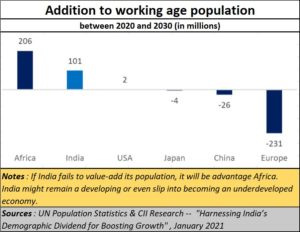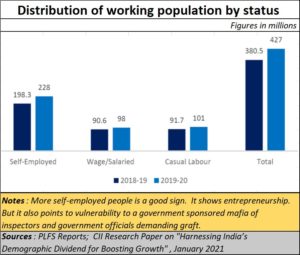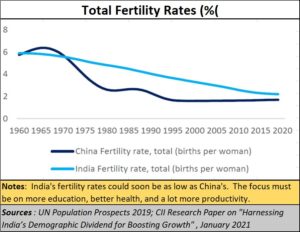https://www.freepressjournal.in/analysis/policy-watch-demographics-and-weaponsising-unemployables
Policy watch
Short-tenure recruitment of unemployables in the army will weaponise them
RN Bhaskar
Last fortnight, the government let it be known it was contemplating introducing short term recruitment – of three year tenures – into the Indian army (https://economictimes.indiatimes.com/news/defence/armed-forces-may-soon-recruit-soldiers-on-short-term-contracts/articleshow/90671646.cms?from=mdr). According to media reports, the Department of Military Affairs has finalised a radical proposal for future recruitment to the armed forces. The Army will be the first to try out the ‘Tour of Duty’ (ToD) concept, which involves recruiting some soldiers for a fixed period of three years.
 The ostensible reason is that it will reduce the salary costs for the army. Rubbish!
The ostensible reason is that it will reduce the salary costs for the army. Rubbish!
There are three problems with this plan.
First it is not a new plan. It was first mooted in 2020 (https://asiaconverge.com/2020/05/bloated-armed-force-want-to-recruit-more-youth/)/ These columns had opposed such plans even then.
Secondly, it takes a year of training to produce a decent soldier. A three-year tenure. therefore, could mean nothing. Instead, after the three years are over, you will have a weaponized human being left free to roam the streets, unless he has skills which could make him employable. Such a person could easily be hired as part of violent mobs and demonstrations. In large numbers, it will be an invitation for pillage and plunder. Remember the brown shirts? These were the Sturmabteilung (German: “Assault Division”), often referred to as Storm Troopers or Brownshirts in the German Nazi Party. They became the paramilitary organization whose methods of violent intimidation played a key role in Adolf Hitler’s rise to power.
 Third, as pointed out in 2020, the military is already overstaffed. The army has 12.35 lakh active personnel, and 9.6 lakh reservists. The Navy has over 67,000 active forces, and 55,000 reservists. And the air force too has 1.4 lakh active staff, and 11.6 lakh reservists. This is in addition to state governments having 15 lakh active defence and paramilitary personnel, and 10 lakh reservists. Many of the staff do not perform active duty, but are used as orderlies, and ‘Batmen’, a perquisite that senior officers and the privileged enjoy.
Third, as pointed out in 2020, the military is already overstaffed. The army has 12.35 lakh active personnel, and 9.6 lakh reservists. The Navy has over 67,000 active forces, and 55,000 reservists. And the air force too has 1.4 lakh active staff, and 11.6 lakh reservists. This is in addition to state governments having 15 lakh active defence and paramilitary personnel, and 10 lakh reservists. Many of the staff do not perform active duty, but are used as orderlies, and ‘Batmen’, a perquisite that senior officers and the privileged enjoy.
In fact, there is an urgent need to downsize these defence forces, and train the best in the use of technology. China has already decided to halve its defence manpower and focus instead of highly trained forces that can use technology to overwhelm the enemy. Why is India trying to put the clock back?
On the contrary, it should study its own demographics more carefully. It must make its limited population a lot more productive than put people into areas where they develop their muscles not brains. If India does not do this, it will be advantage Africa (https://asiaconverge.com/2021/06/can-africa-become-the-new-market-to-stump-india/). It has a younger, better educated workforce as a percentage of its population. It can become the future market for the world.
In fact, as things stand, the government’s ability to create more employable youth has been pathetic. India’s school education has almost collapsed (https://asiaconverge.com/2020/08/the-national-education-policy-has-little-vision-less-strategy/), except for the privileged.
 As a result, companies want skilled manpower, but find recruiting such people increasingly difficult. The result is that more and more people are driven into self-employment – as small entrepreneurs, taxi or autorickshaw drivers, courier boys, caretakers or as porters. If you take unemployed youth and give them army training for three years and then release them into the marketplace, you are actually inviting big trouble.
As a result, companies want skilled manpower, but find recruiting such people increasingly difficult. The result is that more and more people are driven into self-employment – as small entrepreneurs, taxi or autorickshaw drivers, courier boys, caretakers or as porters. If you take unemployed youth and give them army training for three years and then release them into the marketplace, you are actually inviting big trouble.
Look at what is happening in Uttar Pradesh (https://asiaconverge.com/2022/02/the-double-engine-growth-for-uttar-pradesh-must-not-spread-over-india/). That malaise must not be allowed to spread to other states.
If the government wants to reduce unemployment, it should first begin with better school education, and healthcare (https://asiaconverge.com/2022/02/budget-22-sightless-and-derelict/). It should fill up the vacancies in the teaching and healthcare sectors. And it should work towards creating more skilled people for jobs that will result in higher production, higher exports, and better social services. Recruiting them into the army will not help. On the contrary, as stated above, it will be counterproductive.
What do you do with the swelling numbers of the unemployed? Mobilise them into laying railway tracks and building roads in the Northeast, instead of recruiting them into the Army.
India has a great opportunity as it, along with China, hurtles towards declining fertility rates. India still has a large population compared to declining birth rates for the western world. As populations begin shrinking in those countries, India should be focusing on training its people – as quality nurses, doctors, engineers and more – for employment overseas. The Philippines has done this quite well. Bangladesh has reached a level, where people are reluctant to go to the Middle East for jobs, because salary levels and economic growth have created better opportunities back home.
That is what India should also be doing. Else it runs the risk of slipping rapidly into the category of less developed countries. Recruitment in the army may be politically attractive, but it is economically disastrous. It does not make people productive. In any case, the numbers of people in the army and the paramilitary are excessive. They need to be trimmed.
The need of the hour is more productivity. Weaponising the unemployed is definitely not a solution.





































COMMENTS